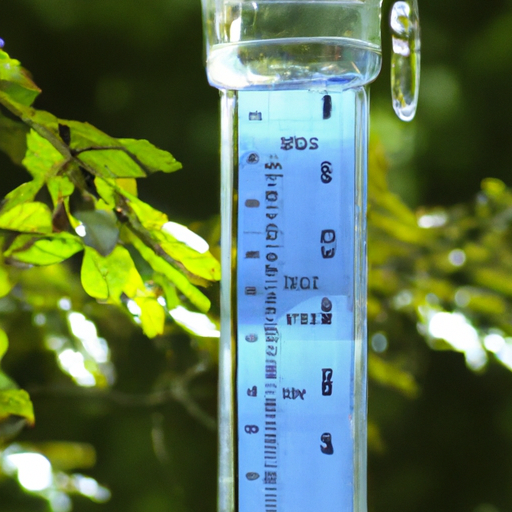Above-Ground Collection Systems
August 16, 2023 | by rainwatercollectionsystem.com

If you’re looking for a sustainable water solution that harnesses the power of nature, look no further than Rain Water Collection System. With their expertise in designing, installing, and maintaining innovative rainwater collection systems, they are dedicated to providing both environmental benefits and practical advantages. Their systems seamlessly integrate into your property, capturing and storing rainwater for various uses, reducing reliance on traditional water sources, lowering utility bills, and contributing to water conservation. Backed by a skilled team and a commitment to quality craftsmanship, advanced technology, and unmatched customer service, Rain Water Collection System ensures that your rainwater collection system functions optimally for years to come. Join them in making a positive impact on the environment and enjoying the advantages of efficient water utilization.
1. Introduction
Have you ever considered capturing rainwater to meet your water needs? Above-ground collection systems are a great solution for harnessing the power of nature and utilizing rainwater for various purposes. In this article, we will explore what above-ground collection systems are, their advantages, components, types, and how to choose the right system for your needs. We will also discuss the installation and maintenance process, creative uses for collected rainwater, and the regulations and permits associated with these systems. So, let’s dive in and learn more about above-ground collection systems!
2. What are Above-Ground Collection Systems?
Above-ground collection systems are innovative water harvesting solutions that capture rainwater from rooftops and store it for later use. These systems consist of various components, such as collection areas, gutters and downspouts, leaf guards and filters, storage tanks, and overflow/diversion systems. By collecting rainwater, these systems reduce the reliance on traditional water sources and contribute to water conservation and sustainability.

3. Advantages of Above-Ground Collection Systems
There are several advantages to implementing an above-ground collection system on your property. Firstly, these systems help reduce water bills by utilizing rainwater for non-potable purposes such as irrigation, toilet flushing, and laundry. By reducing reliance on municipal water sources, you can save money in the long run.
Secondly, above-ground collection systems offer environmental benefits. By capturing rainwater, you are conserving a precious natural resource and reducing the strain on local water supplies. This contributes to water sustainability and can help mitigate water shortages in dry regions.
Furthermore, these systems can help reduce the overall carbon footprint of your property. By utilizing rainwater instead of relying solely on energy-intensive water treatment and distribution systems, you are reducing the energy consumption associated with water provision.
4. Components of Above-Ground Collection Systems
To better understand how above-ground collection systems work, let’s explore the various components that make up these systems.
4.1 The Collection Area
The collection area refers to the surface where rainwater is collected. In most cases, this is the rooftop of a building. The size and design of the collection area can impact the effectiveness of the system, as a larger collection area can capture more rainwater.
4.2 Gutters and Downspouts
Gutters and downspouts play a crucial role in directing rainwater from the collection area to the storage tanks. They prevent water from splattering and causing erosion around the building foundation. Proper installation and maintenance of gutters and downspouts ensure efficient rainwater collection.
4.3 Leaf Guards and Filters
Leaf guards and filters prevent debris such as leaves, twigs, and sediment from entering the storage tanks. They help maintain the quality of collected rainwater and prevent clogging or damage to the system components.
4.4 Storage Tanks
Storage tanks are where the collected rainwater is stored until it is needed. These tanks come in various sizes and materials, such as plastic or metal. The size of the storage tank you choose depends on your water needs and available space.
4.5 Overflow and Diversion Systems
Overflow and diversion systems are essential components that ensure the proper management of excess rainwater. These systems prevent overflow and potential damage to the property during heavy rainfall. They divert excess water to other areas, such as stormwater drains or additional storage tanks.

5. Types of Above-Ground Collection Systems
There are different types of above-ground collection systems available, each with its own advantages and capabilities. Let’s explore some of the common types:
5.1 Basic Rain Barrel System
A basic rain barrel system is a simple and cost-effective option for collecting rainwater. It consists of a single storage barrel connected to a downspout. These systems are easy to install and suitable for small-scale water needs, such as watering plants or gardens.
5.2 Modular above-Ground Collection Systems
Modular above-ground collection systems are versatile and scalable solutions that allow for expansion based on water demand. These systems consist of multiple storage tanks connected in a modular configuration. You can add or remove tanks as needed, making them flexible for different property sizes and water requirements.
5.3 High-Capacity Above-Ground Collection Systems
High-capacity above-ground collection systems are designed for larger-scale applications, such as commercial or industrial properties. These systems can store a significant amount of rainwater and are equipped with advanced filtration and treatment options to ensure water quality.
6. Choosing the Right Above-Ground Collection System for Your Needs
When selecting an above-ground collection system, several factors need to be considered. Let’s explore some important considerations to help you make an informed decision:
6.1 Assessing Water Needs
Start by determining your water needs for various purposes. Calculate the amount of water required for irrigation, toilet flushing, laundry, and other non-potable uses. This will give you an idea of the storage capacity you need for your above-ground collection system.
6.2 Available Space
Consider the available space on your property for installing the system components. Measure the area for the collection surface and identify suitable locations for storage tanks and other system elements. Ensure there is sufficient space to accommodate the chosen system’s size and capacity.
6.3 Budget Considerations
Determine your budget for the above-ground collection system. The cost can vary depending on the type, size, and features of the system. Consider the long-term savings on water bills and the potential return on investment when evaluating the budget.
6.4 Environmental Factors
Take into account the environmental conditions in your area. Consider factors like average rainfall, climate, and potential water restrictions. These factors will influence the effectiveness and efficiency of the system in capturing and storing rainwater.

7. Installation and Maintenance of Above-Ground Collection Systems
Proper installation and regular maintenance are crucial for the optimal functioning of above-ground collection systems. Let’s look at the key steps involved in the installation process and the maintenance requirements:
7.1 Site Preparation
Before installing the system, ensure the collection area is clean and free from debris. Trim overhanging branches or vegetation near the collection surface. This will prevent unwanted debris from entering the system and improve rainwater quality.
7.2 Installing Gutters and Downspouts
Proper installation of gutters and downspouts is essential for efficient rainwater collection. Ensure they are securely attached to the building and slope appropriately to direct water towards the storage tanks. Regularly clean gutters and downspouts to prevent clogging.
7.3 Connecting Storage Tanks
Connect the storage tanks to the downspouts using appropriate piping or hoses. Ensure a secure and watertight connection to avoid leaks or water loss. Consider using filters or screens to further improve the water quality entering the storage tanks.
7.4 Maintenance Requirements
Regular maintenance is necessary to ensure the longevity and effectiveness of your above-ground collection system. Inspect the components regularly for any signs of damage or wear. Clean the gutters, downspouts, and filters to remove debris that may hinder water flow. Check for leaks, and repair or replace faulty components as needed.
8. Creative Uses for Rainwater Collected from Above-Ground Systems
Rainwater collected from above-ground systems can be utilized in various creative ways. Here are some ideas to inspire you:
- Use collected rainwater for watering your garden or landscape, reducing the need for municipal water.
- Connect the system to a drip irrigation system and automate the watering process for your plants.
- Use the rainwater for washing your car or pets, reducing water consumption compared to using a hose.
- Install a rainwater harvesting system near your swimming pool to top it up during dry periods.
- Utilize the collected rainwater for various industrial or commercial processes that do not require potable water.

9. Understanding Regulations and Permits for Above-Ground Collection Systems
Before installing an above-ground collection system, it is important to understand the regulations and permits associated with these systems. Depending on your location, there may be specific requirements or restrictions governing their installation and use. Consult with local authorities or research relevant regulations to ensure compliance with the applicable laws.
10. Conclusion
Above-ground collection systems offer a sustainable and efficient solution for utilizing rainwater. By capturing and storing rainwater, these systems reduce reliance on traditional water sources, save money on water bills, and contribute to water conservation. Understanding the components, types, installation process, and maintenance requirements of these systems will help you choose the right system for your needs. Consider your water requirements, available space, budget, and environmental factors when selecting a system. By embracing above-ground collection systems, you can make a positive impact on the environment while enjoying the benefits of efficient water utilization. So, why wait? Start exploring the possibilities of above-ground collection systems and experience a greener, more sustainable water future.
RELATED POSTS
View all





